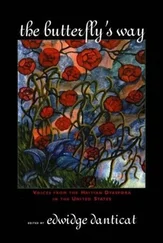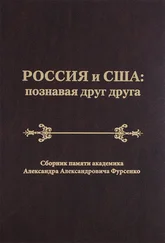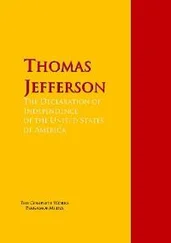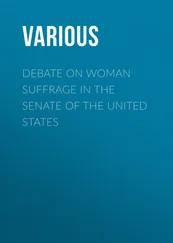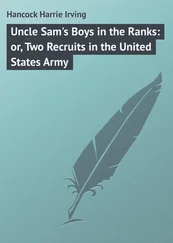U.S. Department of State, Foreign Relations, Russia, 1919 , Frank L. Polk to Commission to Negotiate Peace, March 11, 99–100; Thornwell Haynes to Commission to Negotiate Peace, March 29, 96.
Ibid., Herbert Hoover to Woodrow Wilson, March 28, 100–101.
Ibid., 100.
Link, Papers of Woodrow Wilson , Wilson to Robert Lansing, January 10, 1919, vol. 53, 709.
Ibid., Diary of Colonel Edward House, April 19, 1919, vol. 57, 503–5; Herbert Hoover to Colonel Edward House, April 19, 1919, vol. 58, 505–8; Diary of Ray Stannard Baker, April 19, 1919, vol. 58, 508–9; Herbert Hoover to Wilson, April 23, 1919, vol. 58, 41–42; Williams, Russian-American Relations , 171–72; Amity Shlaes, The Forgotten Man: A New History of the Great Depression (New York: Harper Perennial, 2008), 30.
U.S. Department of State, Foreign Relations, Russia, 1919 , Fridtjof Nansen to Woodrow Wilson, April 3, 102.
Kennan, “Russia and the Versailles Conference,” 31.
U.S. Department of State, Foreign Relations, Russia, 1919 , Big Four to Fridtjof Nansen, April 17, 108–9; Hugh C. Wallace to Frank L. Polk, May 9, 111.
Kennan, Russia and the West under Lenin and Stalin , 141–42; Lloyd George, Memoirs of the Peace Conference , vol. 1, 228.
U.S. Department of State, Foreign Relations, Russia, 1919 , Swenson to Commission to Negotiate Peace, May 14, 112–15; Lord Robert Cecil to Sir Maurice Hankey, May 16, 115; Link, Papers of Woodrow Wilson , Frank L. Polk to Wilson, July 11, 1919, vol. 61, 455n1; Foglesong, America’s Secret War against Bolshevism , 231–32; Somin, Stillborn Crusade , 119.
U.S. Department of State, Foreign Relations, Russia, 1919 , Frank L. Polk to Roland S. Morris, May 15, 349; May 17, 349; Link, Papers of Woodrow Wilson , Notes of a Meeting of the Council of Four, May 10, 1919, vol. 59, 29–30; Wilson to Frank L. Polk, May 14, 1919, vol. 59, 148.
U.S. Department of State, Foreign Relations, Russia, 1919 , William Phillips to Roland S. Morris, June 30, 388.
Ibid., Council of Four to Alexander V. Kolchak, May 26, 369; DeWitt C. Poole to Frank L. Polk, May 29, 370; Frank L. Polk to Commission to Negotiate Peace, June 11, 373; Link, Papers of Woodrow Wilson , Alexander V. Kolchak to Georges Clemenceau, June 4, 1919, vol. 60, 141–44; Kennan, “Russia and the Versailles Conference,” 38; Pereira, White Siberia , 114.
U.S. Department of State, Foreign Relations, Russia, 1919 , Commission to Negotiate Peace to William Phillips, June 20, 149–51.
Ibid., Robert Lansing to Commission to Negotiate Peace, August 2, 156–57; William Phillips to Commission to Negotiate Peace, September 9, 157; Robert Lansing to Ronald C. Lindsay, January 10, 1920, 163.
Ibid., Robert Lansing to Commission to Negotiate Peace, August 2, 156.
Strakhovsky, American Opinion about Russia , 85, 87; Murray, Red Scare , 274–75; McFadden, Alternative Paths , 276, 291. For reference to Martens’s effort to secure recognition and supplies in exchange for Russian raw materials, see Link, Papers of Woodrow Wilson , Ludwig Martens to Robert Lansing, March 25, 1919, vol. 56, 548–51.
U.S. Department of State, Foreign Relations, Russia, 1919 , Roland S. Morris to Robert Lansing, July 22, 394–96.
Ibid., Robert Lansing to Newton D. Baker, July 25, 398.
Ibid., Robert Lansing to Ernest L. Harris, July 26, 398–99.
Ibid., Roland S. Morris to Robert Lansing, July 27, 400; Robert Lansing to Ernest L. Harris, July 30, 401.
Ibid., Roland S. Morris to Robert Lansing, July 31, 401. For reference to the number of staff officers in Kolchak’s army in comparison with the German and American armies, see Carol Willcox Melton, Between War and Peace: Woodrow Wilson and the American Expeditionary Force in Siberia, 1918–1921 (Macon, Ga.: Mercer University Press, 2001), 95.
U.S. Department of State, Foreign Relations, Russia, 1919 , Roland S. Morris to Robert Lansing, August 4, 403–5.
Ibid., August 8, 407–8.
Ibid., August 11, 409; August 16, 415.
Ibid., August 11, 409–10.
Ibid., August 12, 411; August 14, 414; August 18, 416.
Ibid., Robert Lansing to Ernest L. Harris, August 25, 421–22.
Ibid., Roland S. Morris to Robert Lansing, August 27, 422–23; William Phillips to Woodrow Wilson, September 19, 425; Woodrow Wilson to William Phillips, September 20, 426.
Robert J. Maddox, The Unknown War with Russia: Wilson’s Siberian Intervention (San Rafael, Calif.: Presidio, 1977), 123.
Murray, Red Scare , 78; Robert D. Warth, “The Palmer Raids,” South Atlantic Review 48 (January 1949): 1–2.
Murray, Red Scare , 79, 81, 83, 135, 153–55, 193–94; Warth, “Palmer Raids,” 1–3; McFadden, Alternative Paths , 309–10.
Warth, “Palmer Raids,” 10–12, 14–16; Murray, Red Scare , 195–97, 212–15.
Warth, “Palmer Raids,” 5, 8, 10, 14; Murray, Red Scare , 215–16.
Murray, Red Scare , 219.
Ibid., 207, 224–25, 233–34, 238; Warth, “Palmer Raids,” 4, 7, 11; Strakhovsky, American Opinion about Russia , 89–90.
Murray, Red Scare , 83, 170–71, 178; Warth, “Palmer Raids,” 8.
Murray, Red Scare , 169.
Warth, “Palmer Raids,” 17–19, 22; Murray, Red Scare , 247, 249, 252–53, 262, 273; McFadden, Alternative Paths , 320–21.
Murray, Red Scare , 201.
U.S. Department of State, Foreign Relations, Russia, 1919 , Robert Lansing to John K. Caldwell, September 9, 119–20; Link, Papers of Woodrow Wilson , An Address in Convention Hall in Kansas City, September 6, 1919, vol. 63, 70; An Address in the Des Moines Coliseum, September 6, 1919, vol. 63, 76–77; An Address in the Minneapolis Armory, September 9, 1919, vol. 63, 134; An Address in the St. Paul Auditorium, September 9, 1919, vol. 63, 145; An Address at Bismarck, September 10, 1919, vol. 63, 161–62; An Address in the Billings Auditorium, September 11, 1919, vol. 63, 175; An Address at Coeur D’Alene, September 12, 1919, vol. 63, 216; An Address in the Tacoma Armory, September 13, 1919, vol. 63, 244–45; An Address in the Seattle Arena, September 13, 1919, vol. 63, 263.
Читать дальше


